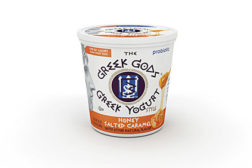Articles by Dr. Gail Barnes
Back to the land
The relationship between dairy packaging and composting is not that obvious because much dairy packaging involves plastics, which currently are not compostable.
Read More
Slimming down
How to create a more sustainable gallon jug for milk
3 ways to a slimmer jug are: light-weighting through container design; adding calcium carbonate as a filler to replace virgin HDPE; and light-weighting plus optimizing for calcium carbonate filler.
December 10, 2013
Processors see the big picture in packaging
If product is spoiled or damaged, then it doesn’t matter how “green” or sustainable the packaging is. Dairy processors are moving beyond waste and recyclability and taking a holistic view of product packages.
February 18, 2013
Learn how to be an energy star by cutting costs
Free online resources from the EPA and the Innovation Center for U.S. Dairy simplify process of reducing energy, cutting costs.
October 16, 2012
Stay ahead of the curve. Unlock a dose of cutting-edge insights.
Receive our premium content directly to your inbox.
SIGN-UP TODAYCopyright ©2025. All Rights Reserved BNP Media.
Design, CMS, Hosting & Web Development :: ePublishing





